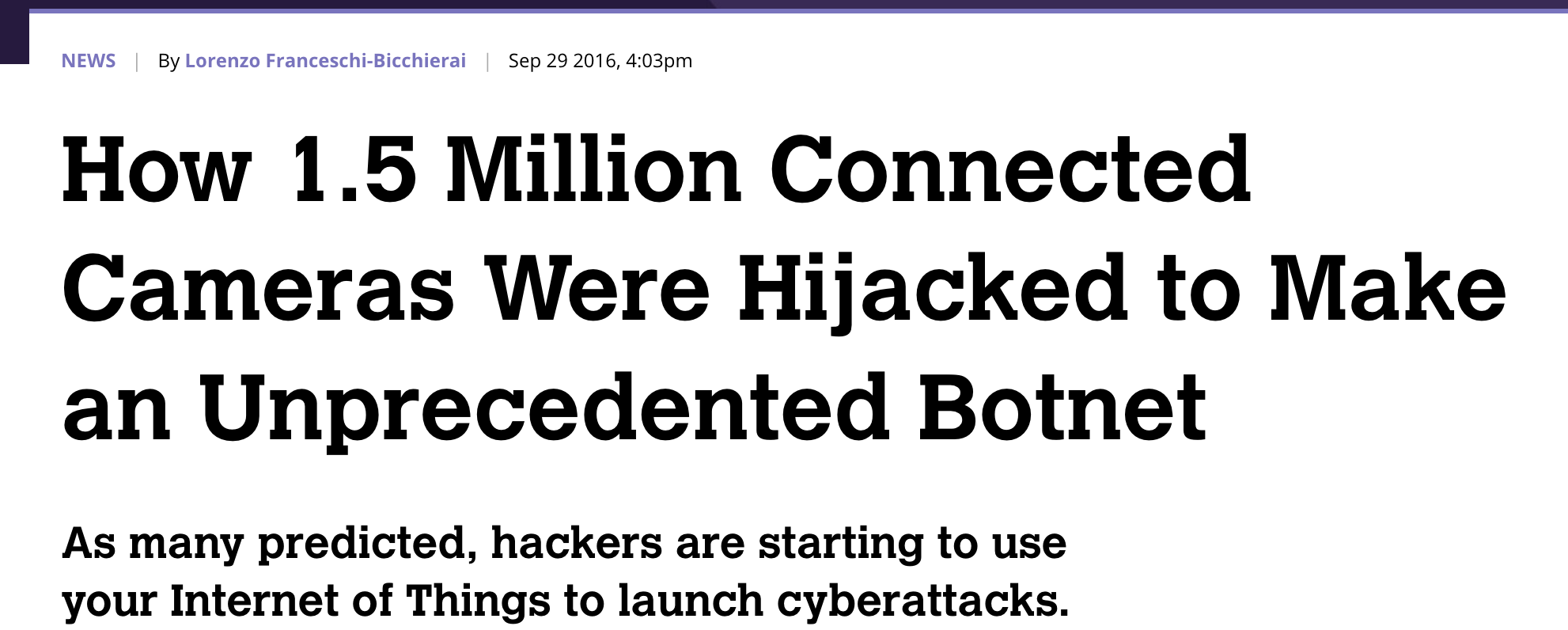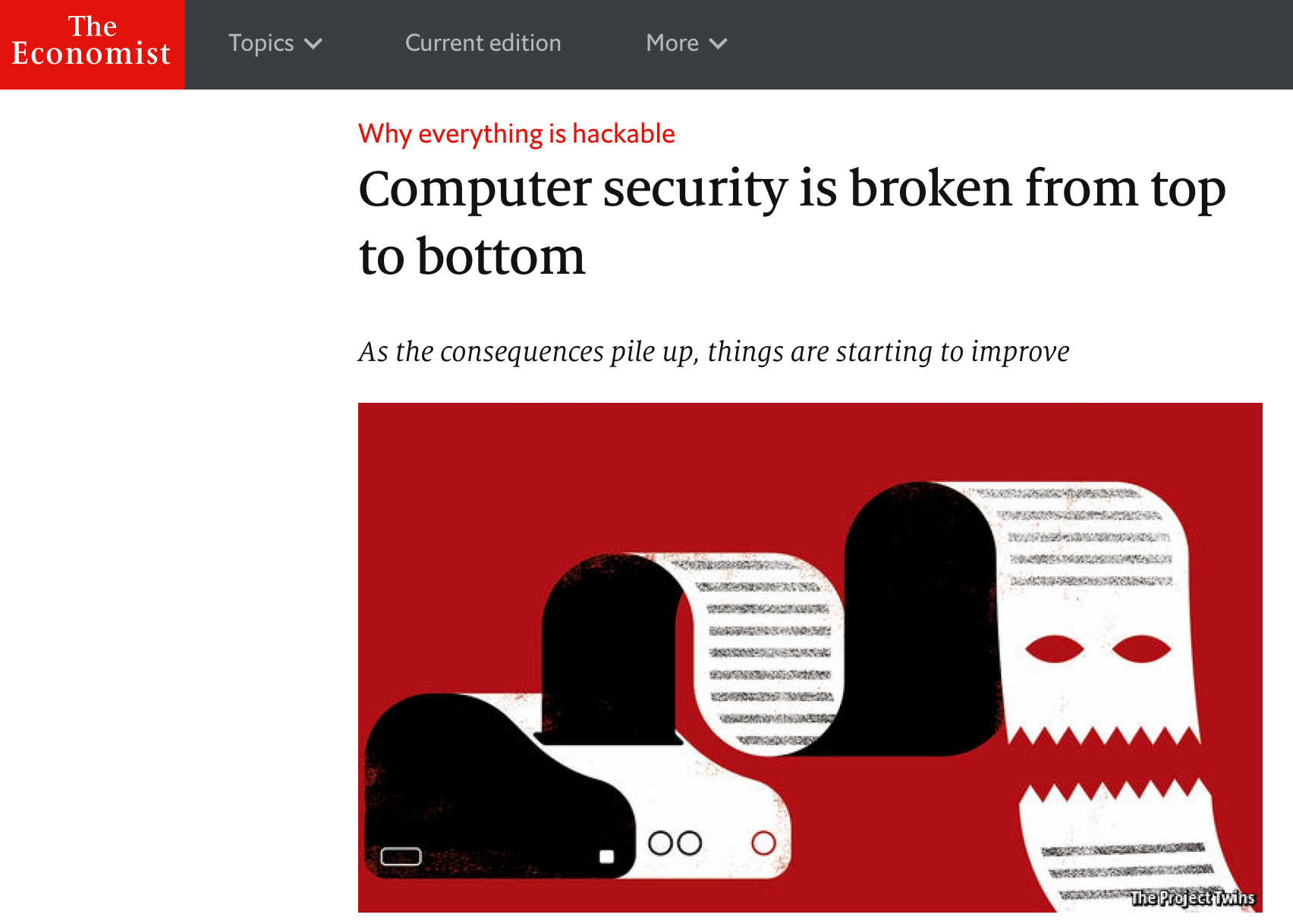5.1 KiB
5.1 KiB
| author | title | date |
|---|---|---|
| Topics in Security and Privacy Technologies (CS 839) | Lecture 01 | September 05, 2018 |
Security and Privacy
It's everywhere!
Stuff is totally insecure!
It's really difficult!
What topics to cover?
A really, really vast field
- Things we will not be able to cover:
- Real-world attacks
- Computer systems security
- Defenses and countermeasures
- Social aspects of security
- Theoretical cryptography
- ...
Theme 1: Formalizing S&P
- Mathematically formalize notions of security
- Rigorously prove security
- Guarantee that certain breakages can't occur
Remember: definitions are tricky things!
Theme 2: Automating S&P
- Use computers to help build more secure systems
- Automatically check security properties
- Search for attacks and vulnerabilities
Our focus: four modules
- Differential privacy
- Applied cryptography
- Language-based security
- Adversarial machine learning
Differential privacy
A mathematically solid definition of privacy
- Simple and clean formal property
- Satisfied by many algorithms
- Degrades gracefully under composition
Applied crypto
Computing in an untrusted world
- Proving you know something without revealing it
- Certifying that you did a computation correctly
- Computing on encrypted data, without decryption
- Computing joint answer without revealing your data
Language-based security
Ensure security by construction
- Programming languages for security
- Compiler checks that programs are secure
- Information flow, privacy, cryptography, ...
Adversarial machine learning
Manipulating ML systems
- Crafting examples to fool ML systems
- Messing with training data
- Extracting training information
Tedious course details
Class format
- Three components:
- Paper presentations
- Final project
- Class participation
- Annoucement/schedule/materials: on website
- Class mailing list: compsci839-1-f18@lists.wisc.edu
Paper presentations
- Sign up to lead a discussion on one paper
- Suggested topic, papers, and schedule on website
- Before each presentation:
- I will send out brief questions
- Please email me brief answers
If you want advice, come talk to me!
Final project
- Work individually or in pairs
- Project details and suggestions on website
- Key dates:
- September 19: Pick groups and topic
- October 15: Milestone 1
- November 14: Milestone 2
- End of class: Final writeups and presentations
If you want advice, come talk to me!
Todos for you
- Complete the course survey
- Check out the course website
- Think about what paper you want to present
- Brainstorm project topics
Defining privacy
What does privacy mean?
- Many kinds of "privacy breaches"
- Obvious: third party learns your private data
- Retention: you give data, company keeps it forever
- Passive: you don't know your data is collected
Why is privacy hard?
- Hard to pin down what privacy means!
- Once data is out, can't put it back into the bottle
- Privacy-preserving data release today may violate privacy tomorrow, combined with "side-information"
- Data may be used many times, often doesn't change
Hiding private data
- Delete "personally identifiable information"
- Name and age
- Birthday
- Social security number
- ...
- Publish the "anonymized" or "sanitized" data
Problem: not enough
- Can match up anonymized data with public sources
- De-anonymize data, associate names to records
- Really, really hard to think about side information
- May not even be public at time of data release!
Netflix challenge
- Database of movie ratings
- Published: ID number, movie rating, and rating date
- Attack: from public IMDB ratings, recover names for Netflix data
"Blending in a crowd"
- Only release records that are similar to others
- k-anonymity: require at least k identical records
- Other variants: l-diversity, t-closeness, ...
Problem: composition
- Repeating k-anonymous releases may lose privacy
- Privacy protection may fall off a cliff
- First few queries fine, then suddenly total violation
- Again, interacts poorly with side-information
Differential privacy
- Proposed by Dwork, McSherry, Nissim, Smith (2006)
A new approach to formulating privacy goals: the risk to one’s privacy, or in general, any type of risk... should not substantially increase as a result of participating in a statistical database. This is captured by differential privacy.
Basic setting
- Private data: set of records from individuals
- Each individual: one record
- Example: set of medical records
- Private query: function from database to output
- Randomized: adds noise to protect privacy
Basic definition
A query Q is (\varepsilon, \delta)-differentially private if for every two
databases db, db' that differ in one individual's record, and for every
subset S of outputs, we have:
\Pr[ Q(db) \in S ] \leq e^\varepsilon \cdot \Pr[ Q(db') \in S ] + \delta


